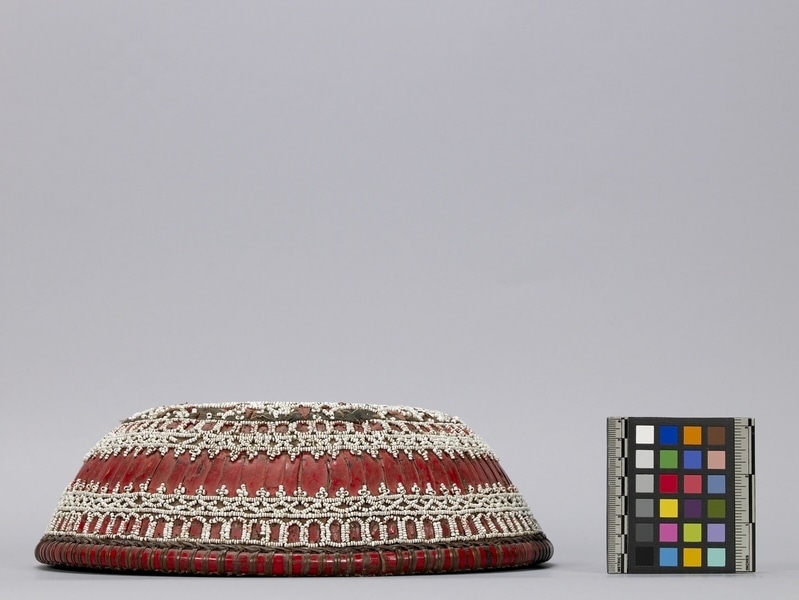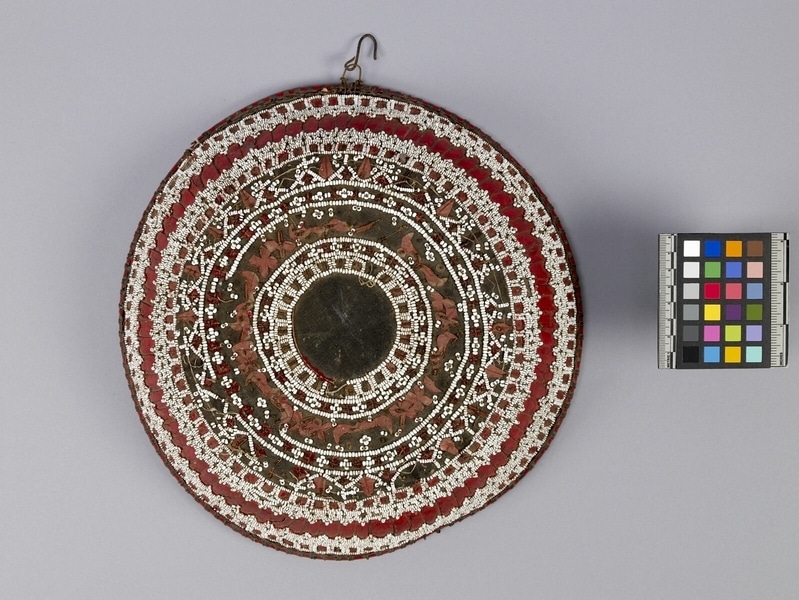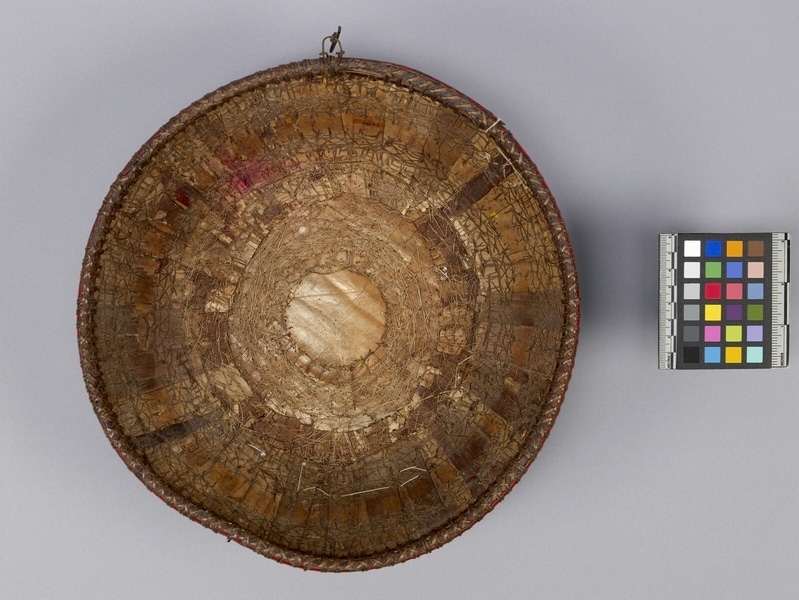Offering Basket Item Number: Ib454 from the MOA: University of British Columbia



Description
Rounded, circular flaring, fibre woven container that has a bowl shape. Exterior has intricate white beadwork on cloth backing in geometric horizontal, concentric bands. Lower beadwork is 10 cm. deep. with 'extending' beads above, and a pattern of x's, reflective ? red panels outlined by white, alternating red leaf-like shapes and white geometric beadwork with metallic coiling, alternating metallic coiling and white beadwork crosses, red floral motifs with metallic coiling and interspersed white beads, alternating metallic coiling and white beadwork crosses, and alternating pairs of vertical lines with metallic coiling at the centre. Upper beadwork is 3.5 cm. with a pattern of reflective ? red panels outlined by white, x's, and 'dangling' beads below.
History Of Use
This decorated offering bowl is made of dried leaves from palm trees known as lontar in Indonesia. Beadwork in Bali has traditionally been used to decorate sacred items, and has now become popularized through beaded designs on clothing, bags and sandals. Offering bowls or baskets are used by the Hindu community in Bali. The offerings are called banten. There are different types of offerings. Simple daily offerings, known as Canang sari – fruit, flowers, rice, betel and incense – are placed in trays made of woven coconut or banana leaves, and left around a home, a family shrine or along the road. They are perishable goods and ephemeral works of art, and are a sacred way for Balinese Hindu worshippers to express gratitude and represent their devotion to the gods. More elaborate offerings are made for religious festivals, rituals at temples, and other ceremonies.
Specific Techniques
The stitches inside connect the lontar strips into a bowl shape, and attach the beads on the outside.
Cultural Context
religious; ceremonial
Item History
What
Where
- Holding Institution
- MOA: University of British Columbia
- Made in
- Bali, Indonesia
When
- Ownership Date
- before July 7, 1988
- Acquisition Date
- on July 7, 1988
Other
- Item Classes
- basketry; beadwork
- Condition
- fair
- Accession Number
- 1268/0009